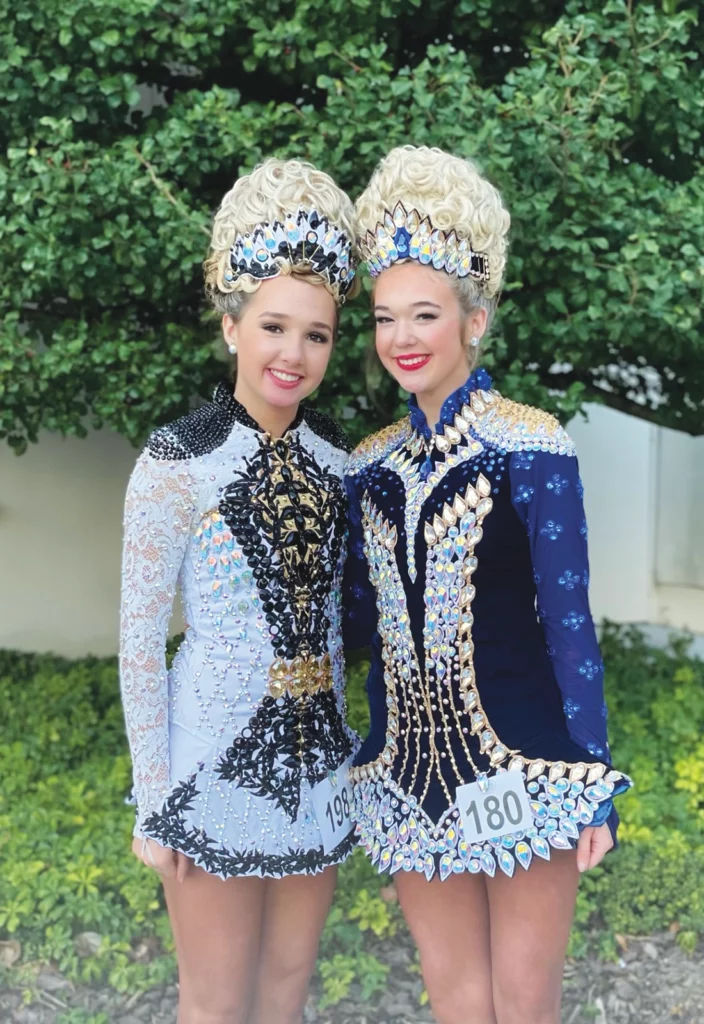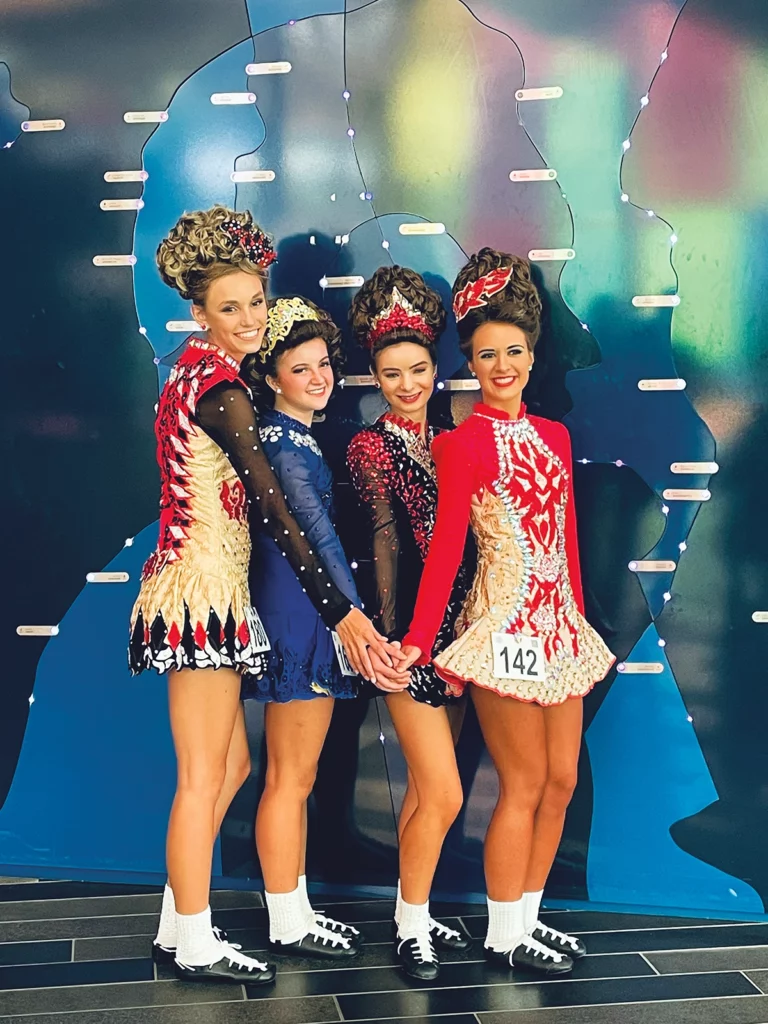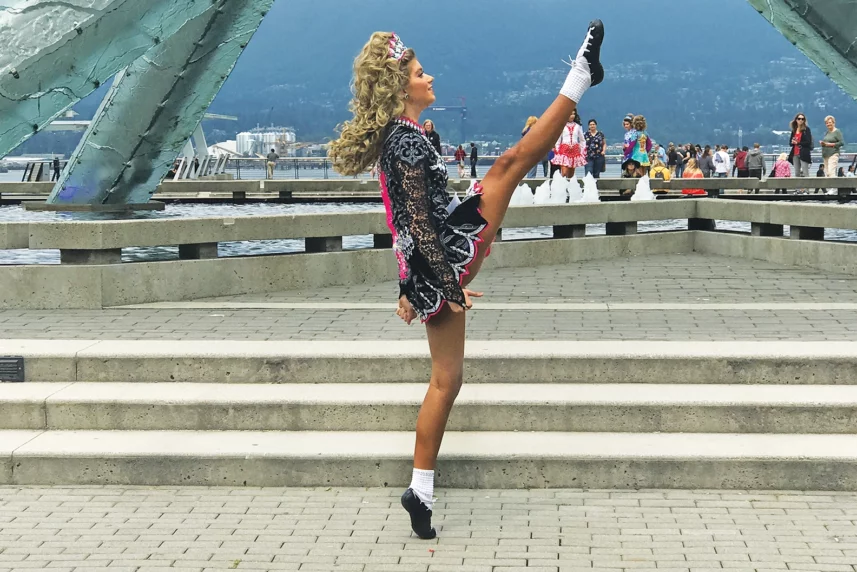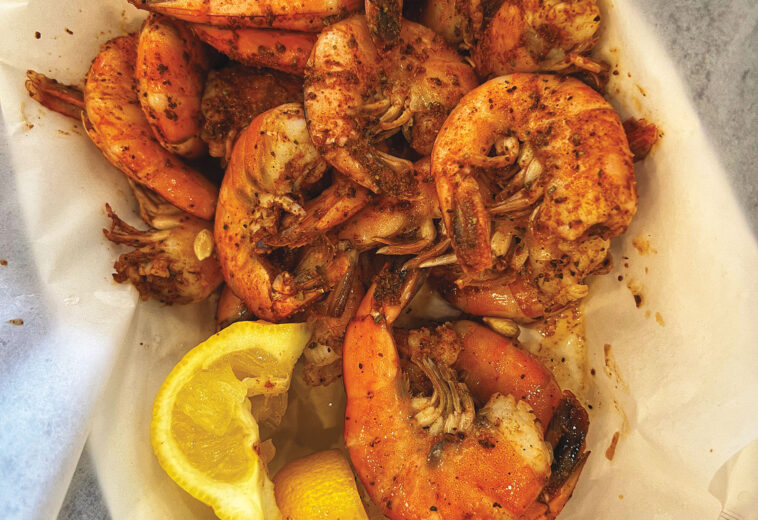Article:
BY MANDY HOWARD
When Alyssa Andersen of Wake Forest was 7 years old, she saw an Irish dance performance at a school talent show. From the dresses to the beautifully rhythmic steps, she was hooked. “I had no idea what I was getting involved with when she first started,” says Alyssa’s mom, Beth Andersen.
“Unless you know someone, I don’t think there’s any way you can know what’s about to happen.” Like most Irish dancers, Alyssa started with lessons and local performances. Then, she became interested in competition. “They see the dresses—and earn the dress—and next thing you know, you’re in heavy and there’s no escape,” Beth laughs.
GETTING STARTED
When students begin in Irish dance, they step out in soft leather-laced slippers called ghillies. Similar to ballet flats, ghillies form to the feet and allow for elegant toe points and soft, graceful movements. As students progress, they are introduced to their first set of “hard shoes.” Hard shoes are often likened to tap shoes, but in Irish dance, the shoes are heavier, and the heel and ball of the feet are constructed of fiberglass instead of metal.
Different shoes complement different styles and time signatures of music, and for each shoe there are several dances that Irish dancers are expected to master. When most people hear the word “jig,” they conjure a hopping dance motion consisting of a kick or skip. When Irish dancers hear the word, they understand it as a time signature.
From the first few notes, an experienced Irish dancer can discern between a treble jig, slip jig and single jig, and can perform steps suited for that specific signature.
Once students master the shoes, music and first steps, they can register for their first Irish dance competition, or feis (pronounced “fesh”). There, judges give marks based upon rhythm, technique, mastery of steps and, at more advanced levels, styling.
Beginning dancers wear “school dresses” or simple, traditional dresses. When dancers reach an advanced level of competition they “earn” their “solo dress”—a one-of-a-kind dress that features intricate embroidery and a plethora of crystals. These dresses can cost anywhere from $500 to several thousand dollars each.
WORLDLY SUCCESS
With each successive win, dancers continue to advance in levels and earn more opportunities. “I danced at my first regional competition (called “oireachtas,” pronounced O-Rock-Tus) at 9 years old. The following year, I qualified for Worlds in Glasgow, Scotland,” Alyssa says.
“She won’t tell you this, but she’s the only girl in the state of North Carolina in her age group who has qualified for Worlds in every year of eligibility,” Beth adds proudly.
In order to qualify for the World Irish Dancing Championships, a feat Alyssa has achieved seven times, a dancer must place in the top percent of a regional or national competition after being adjudicated in three dances by nine separate judges. Approximately 1% of Irish dancers ever qualify to dance upon the “Worlds” stage as solo dancers.
There are other opportunities to dance on the sport’s largest stages outside of solo dancing, however. Teams can compete in intricate figure dances judged on synchronicity and precision. Also, categories such as choreography (similar in actuality to “Riverdance”) and dance drama—in which Irish folk tales are told through dance—allow for more creative expression and costuming.
Peyton Shaheen, a Raleigh native who just finished her freshman year at North Carolina State University, began Irish dancing when she was 5 years old. She went to hundreds of feiseanna (the plural form of feis), including trips to the North American Irish Dance Championships (referred to as “Nationals”).
But some of her most cherished memories come from team competitions. “My favorite was when our team placed second in the world in dance drama. We worked so hard, and it was a once-in-a-lifetime experience I will never forget,” Shaheen says.
No matter the competition style, technique is always vital. Moves like rocks, batters, birds and cuts must be performed in perfect timing, with turnout, on toes, all while keeping the upper body still and shoulders relaxed. And, don’t forget, the wig and smile should stay put at all times. “I wish people realized that it takes just as much effort, dedication and athleticism as any other high school sport,” Alyssa says.

A CRYSTALLIZED BOND
Considering the intensity of training (which can be 15–20 hours a week), the cost of some ‘blinged-out’ dresses, the oft-ridiculed, pageant-like side of the sport, and a very public judging scandal in 2022 that allegedly involved “feis-fixing” (giving out false scores), it might be easy to write Irish dance off as a complicated pursuit. But to keep any of that as the focus does the sport a disservice, because the beauty of Irish dance comes not from its wigs, false eyelashes or Swarovski crystals. It comes from the community.
“You’re competing with the same group of girls the whole time. You get to establish friendships with people from all over the country and all over the world as you continue to grow as a dancer,” Alyssa says.
Shaheen, who readily admits she doesn’t miss wig headaches or the smell of fake tanner, agreed, saying, “I’d hang out with my dance friends three to four times a week and we’d travel the world together, and all of a sudden, that just ends. It’s a really special community, and hard to live without.”
That impactful bonding leads to what may be the most crucial life skill Irish dancers learn. From the earliest competitions, where winners are listed on a piece of paper in a hallway, to the championship level, where podium placements are announced publicly, dancers typically receive their results alongside friends. They quickly learn to handle both winning and losing with grace, empathy, love and humble gratitude. They learn to celebrate others, even when they are disappointed.
“In the case of Worlds, you travel thousands of miles across the ocean just to ‘fail.’ Then you come back the next year and do it again. And you just have to keep going, and learning how to work harder and accept defeat as a chance to grow as a person,” Alyssa says. “It helps you understand failure in a different light.”
Alyssa, who is currently a high school senior, says she sees the benefit of this growth as she and her friends are receiving admission decisions from colleges, especially in light of how people may choose to respond to unwanted news. “In Irish dance, oftentimes when you’re receiving disappointment, it’s in the spotlight, on a stage, and you have to keep a brave face the whole time,” she says. “I think that growth has helped me manage disappointment in different aspects of my life, too.”
CAN YOU MAKE THE CUT?
Local Irish dance schools and programs offer beginning classes for toddlers through adults. Here are a few to check out.
Triggle Academy of Irish Dance
919.949.0877
8320 Litchford Road, Suite 134, Raleigh
3462 Apex Peakway, Apex
143 Chatham Downs Drive, Chapel Hill
Kilpatrick Irish Dancing School
919.628.4473
1333 Buck Jones Road, Cary
134 S. Main Street, Fuquay-Varina




